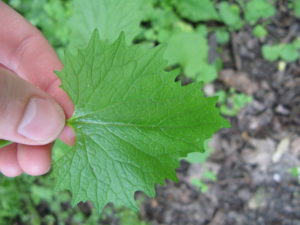After a very cold November and December, we are into a January thaw. Even with the mild weather I know it’s too soon to do any serious gardening. But the pull to be outside is irresistible. So let’s talk about what to do in the winter garden.
OPEN THE GARDEN SHED
The first thing I did on a mild day was to open the garden shed. Good thing I did, too! Mice had taken refuge there so setting some mouse traps was the first order of business. The second mouse-related task was to disabuse them of the idea that our shed is for them. A surefire way to do that is spray deer repellent in the shed, especially under the mower housing. I have already lost one mower to a mouse nest in the engine compartment. So I was doubly generous with that application.
SPRAY DEER/RABBIT REPELLENT
Above freezing temps are the ideal time to apply your favorite animal repellent. I am a big fan of Deer Defeat. Take advantage of the nice weather (when the windows are still closed) to liberally apply whatever you use to keep those varmints away. It might be a long time before you get this opportunity and they get hungrier by the minute.
SHOP FOR NEW HYDRANGEAS AND COMPANION PLANTS
Remember that post I did a while back on hydrangea companion plants? Maybe now is the time to go back and re-read it to see if you want to add any of those plants in 2023. What’s better than garden dreams?
DRAG OUT THOSE GARDEN NOTES YOU MADE IN 2022
I hope you took the time last season to record what happened to your hydrangeas. Now is the time to review those notes and photos so you can make some decisions about which ones to replace, move, cut back, etc. Maybe you need to install some soaker hoses to keep them hydrated when your summer drought conditions return. You know that always happens. Or maybe your climbing hydrangea needs a new trellis. Look around – I’m sure you’ll see things you didn’t last year.
REPAIR, CLEAN, AND SHARPEN YOUR TOOLS
Cleaning your tools is easy. Use a brush to get rid of loose dirt and debris. Then soak the work end in a bucket of warm soapy water and sponge off any residue. Finish them off with soak or spray of isopropyl alcohol (the kind you buy in the drugstore). You can also use sterilizing wipes. We have a lot of Covid experience with that product, right?
Sharpening tools is next on the list. This applies to shovels (so you can dig more easily) as well as pruners and other cutting tools.
Finish off your tool work with a light oiling to prevent rust. You can use an oil-soaked rag or paper towel for this. No need to use anything toxic. I find cooking oil to be just fine for this job. A spray product is usually helpful for the hard to reach places like hinges. Disinfecting and oiling now will be some of the best work you do to prepare for the season.
MULCH
It’s too soon to do any mulching in cold climates. That will only hold the cold in which is not your objective. But if you are in a warmer climate, you could start to address your mulch situation. Weed seeds germinate when the soil temp reaches about 55 degrees, so pre-empting that germination process by covering the soil will pay dividends in the growing season.
WEEDING AND GROOMING
Weeding is the garden job that never ends. My soil right now is somewhat workable in the first two inches which has allowed me to pull garlic mustard (Alliaria petiolata), a Connecticut invasive plant. It’s about the only green growth I see so it’s easy to spot and remove.
The hellebore foliage has been suffering with the cold temps, ice, and snow. The plants look pretty ratty so cutting the foliage back now before the flowers emerge might be yet another small activity to keep you outside on these warmer days. When I wait too long and the flowers start to push up, I inadvertently cut a flower stalk or two by accident. So cutting the foliage back now keeps me from making that mistake. The other early spring bloomer is epimedium. You can get rid of all that foliage now before those flowers emerge.
PRUNING AND PLANTING
If you are in an area with no real dormant season, you could start pruning your hydrangeas. Remember to only go after the ones that flower on new wood (Arborescens and Paniculatas). All other hydrangeas flower on old wood so cutting them now will potentially remove this year’s flower buds. Cold climate gardeners can do the same but I would suggest you wait until Mother Nature has taken her best shot over the next 90 days.
In warm areas, you could also start planting now, whether it be hydrangeas or other plants. Just be sure you keep an eye on the weather for unexpected late season cold snaps. They could ruin your best plans.
ENJOY THE DOWN TIME
You might just want to enjoy the downtime that a dormant season provides. There will be time enough to get out in the garden before you know it. Meanwhile, find a flower show or two to attend. The displays and education sessions are always worthwhile, especially when you are with your “tribe.”
UPCOMING PUBLIC SPEAKING DATES

Audience listening to speaker
Speaking of flower shows, I have a few public dates to share with you where I’ll be speaking and selling signed copies of my best selling hydrangea book:

Gardener holding book, Success With Hydrangeas
February 19, Southeastern Connecticut Home Show at Mohegan Sun Arena: “Success with Hydrangeas” (entrance fee for the show)
February 24, Connecticut Flower and Garden Show, Hartford, CT.: “Easy Breezy Plants”, and “Shady Characters” (entrance fee for the show)
March 12, New York Botanical Garden, Bronx NY: Pruning Bigleaf and Mountain Hydrangeas (fee based)
TELL/BRING YOUR FRIENDS – I WOULD LOVE TO MEET YOU!
6 Secrets for Stunning Hydrangea Flowers
Get my FREE mini-guide with 6 fool-proof tips showing how to grow hydrangeas that produce the most amazing flowers.
No spam - I promise!








